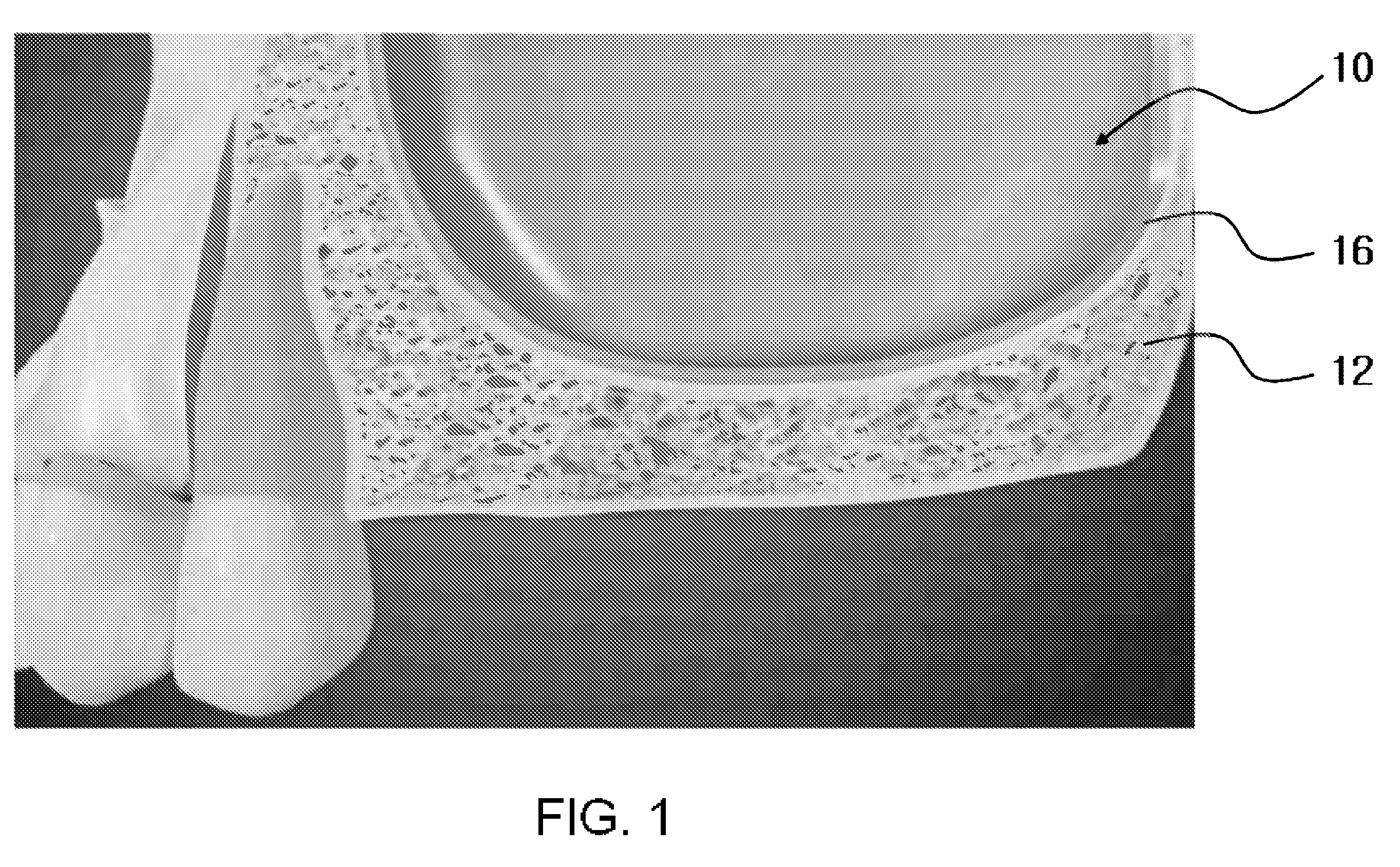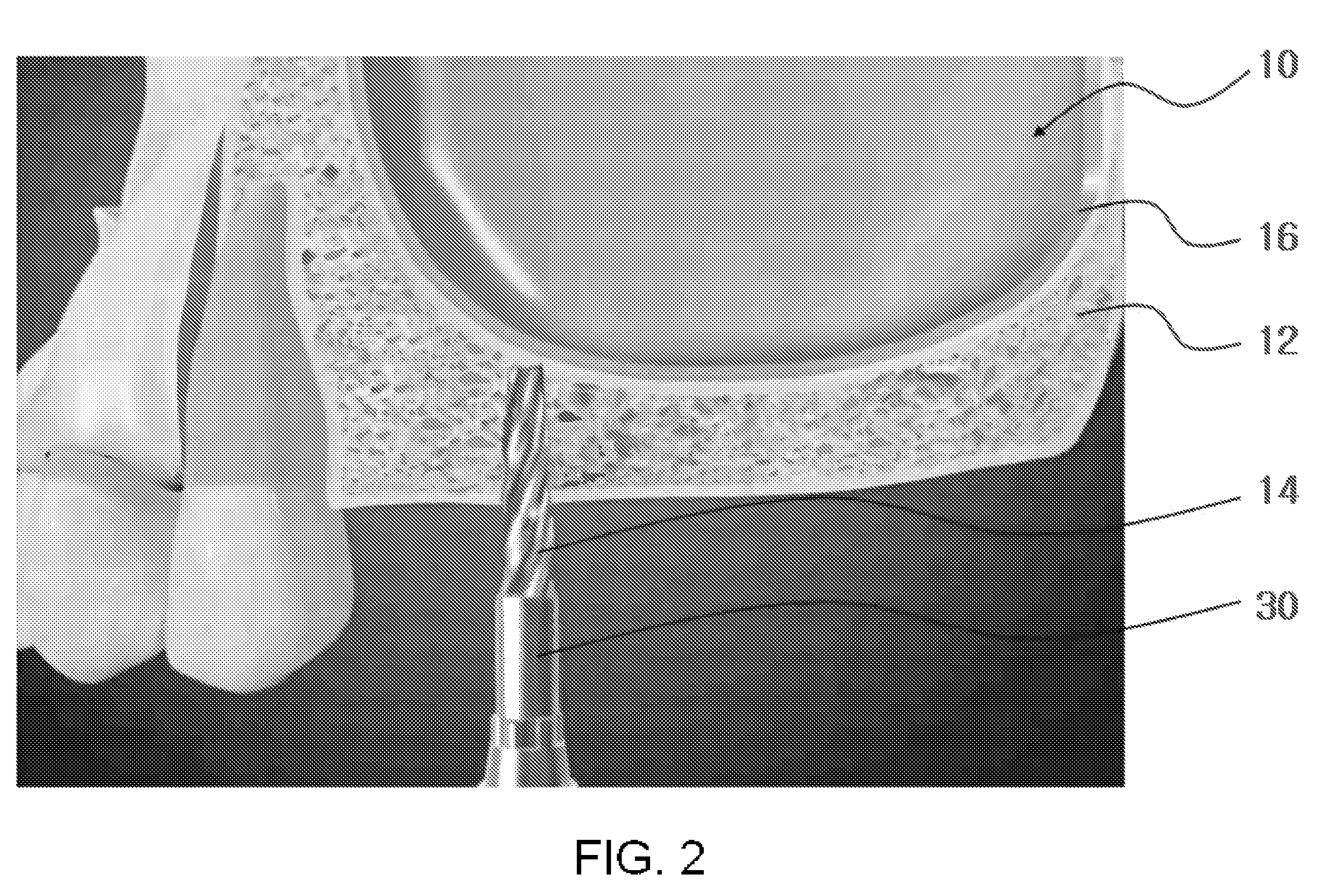Method of maxillary sinus bone grafting for placement of implant
a maxillary sinus bone and implant technology, applied in the field of maxillary sinus bone grafting for implant placement, can solve the problems of long implant that cannot be placed into lack of bone in which the implant can be placed, and difficulty in carrying out the implantation of the upper posterior teeth, etc., to achieve fast, safe, and alleviate the pain of the patien
- Summary
- Abstract
- Description
- Claims
- Application Information
AI Technical Summary
Benefits of technology
Problems solved by technology
Method used
Image
Examples
Embodiment Construction
[0046]Description will now be made of exemplary embodiments of the present invention with reference to the accompanying drawings.
[0047]As illustrated in FIGS. 1 to 14, a method of maxillary sinus bone grafting for placement of an implant according to the present invention includes a first step of forming a vertical hole in a maxillary sinus floor of a maxillary sinus for placement of the implant, a second step of lifting a maxillary membrane via the vertical hole of the maxillary sinus floor, a third step of enlarging a diameter of the vertical hole with the maxillary membrane lifted, a fourth step of inserting the bone graft material via the enlarged vertical hole, a fifth step of pushing the inserted bone graft material in a space between maxillary sinus floor and the maxillary membrane, and a sixth step of after the bone graft material has been cured, placing the implant into the vertical hole.
[0048]First, in FIG. 1, upon placement of an implant in an upper posterior region, if a...
PUM
 Login to View More
Login to View More Abstract
Description
Claims
Application Information
 Login to View More
Login to View More - R&D
- Intellectual Property
- Life Sciences
- Materials
- Tech Scout
- Unparalleled Data Quality
- Higher Quality Content
- 60% Fewer Hallucinations
Browse by: Latest US Patents, China's latest patents, Technical Efficacy Thesaurus, Application Domain, Technology Topic, Popular Technical Reports.
© 2025 PatSnap. All rights reserved.Legal|Privacy policy|Modern Slavery Act Transparency Statement|Sitemap|About US| Contact US: help@patsnap.com



